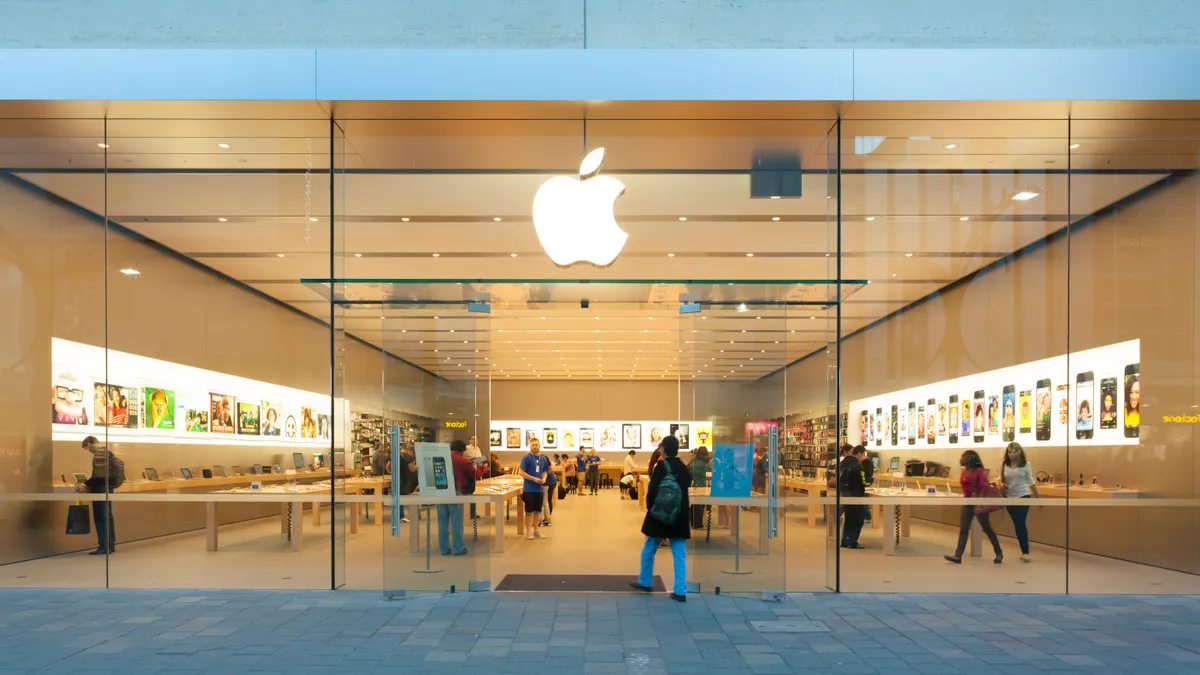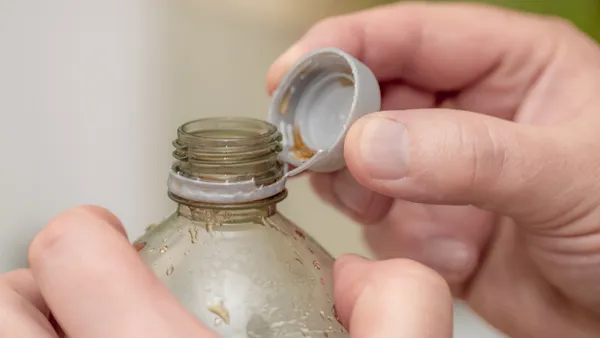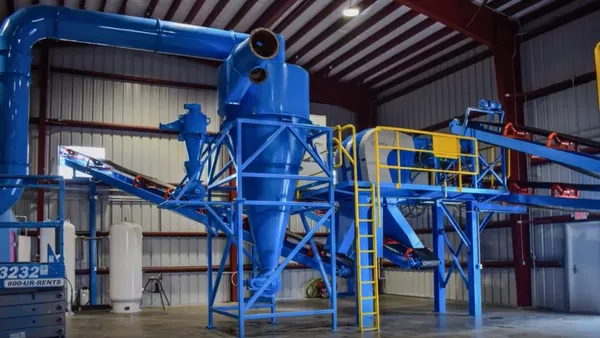Dive Brief:
- Apple set a big goal in its annual Environmental Responsibility Report — a closed loop supply chain that only uses recycled material and eventually reduces the need for mineral mining, as reported by VICE News, CNBC and other publications. The company hasn't set a timeline for this goal, and recognized that it is ambitious, but outlined steps that have already been taken to reach it.
- The company created "material risk profiles" for the 44 elements in its products to begin identifying areas for improvement within the sourcing and manufacturing process. The company's two Liam recycling robots can now take apart up to 2.4 million phones per year and recovered aluminum has been used to make mini computers in iPhone assembly facilities. Apple is also now using 100% recycled tin for the solder on the main logic boards in the iPhone 6s.
- Apple noted that 99% of the paper in its packaging comes from recycled sources and they have now worked to protect enough sustainably managed forests to offset all of these packaging needs. The company is also up to 96% renewable energy sources and continues to reduce the amount of carbon emissions per product.
Dive Insight:
This comes shortly after Apple's annual Supplier Responsibility Progress Report outlined a move toward more sustainable sourcing and highlighted the fact that all of its final assembly sites in China have qualified for the UL Zero Waste to Landfill standard. Along with their recycling robots and Apple Renew program, this has helped bolster the company's environmental credentials in recent years.
Though in the eyes of some environmental advocates and electronics repair experts, the company isn't addressing the core issue behind its products. Main critiques include their leading role in the ongoing update cycle that causes consumers to trade in functional products for the latest model and sometimes makes accessories obsolete along the way. They also criticize product designs that make repair very challenging as seen most recently with the new AirPods. The company has worked to block legislation that would open up repair opportunities in the name of preserving product quality and brand integrity, but this can also limit electronics recyclers that want to dismantle the products for full material recovery.
According to research from the United Nations University, small devices such as phones comprised 7% of global e-waste in 2014 and diversion rates were low. A separate report showed e-waste generation increased in Asia by 63% between 2010 and 2015. No matter how fast Apple's two recycling robots are, they couldn't keep up with the company's share of this material even if it was all collected. As the technology giant sets forth on the path to a closed-loop system, it may discover that more involvement from the recycling industry will be needed to get there.













